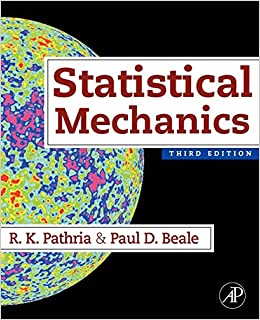To derive the desired results, we make the following observations: (i) Since a pair of particles with
Question:
To derive the desired results, we make the following observations:
(i) Since a pair of particles with spin \(J\) has \((2 J+1)^{2}\) possible spin states while a pair of spinless particles has only one, we have to divide the expression for \(b_{2}\) pertaining to the former by \((2 J+1)^{2}\) so that we are talking of the average contribution per state.
(ii) To make a transition from discreteness in orientation (that is associated with a finite value of \(J\) ) to continuity in orientation, we should take the limit \(J \rightarrow \infty\).
(iii) In view of the foregoing, the distinction between the original system being symmetric or antisymmetric is completely lost, and we are led to the results quoted in the problem.
Next, using eqns. (10.5.28, 36 and 37), we obtain for the quantum-mechanical Boltzmannian gas
\[
b_{2}=-\left(\frac{D}{\lambda} \right)^{1}-3 \pi\left(\frac{D}{\lambda} \right)^{3}+\frac{22 \pi^{2}}{3}\left(\frac{D}{\lambda} \right)^{5}+\ldots
\]
which differs significantly from the corresponding classical result.
Step by Step Answer:






